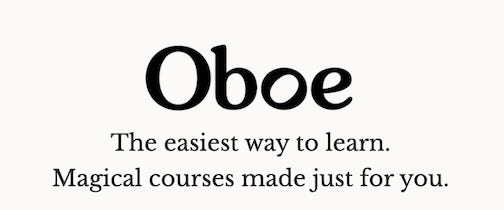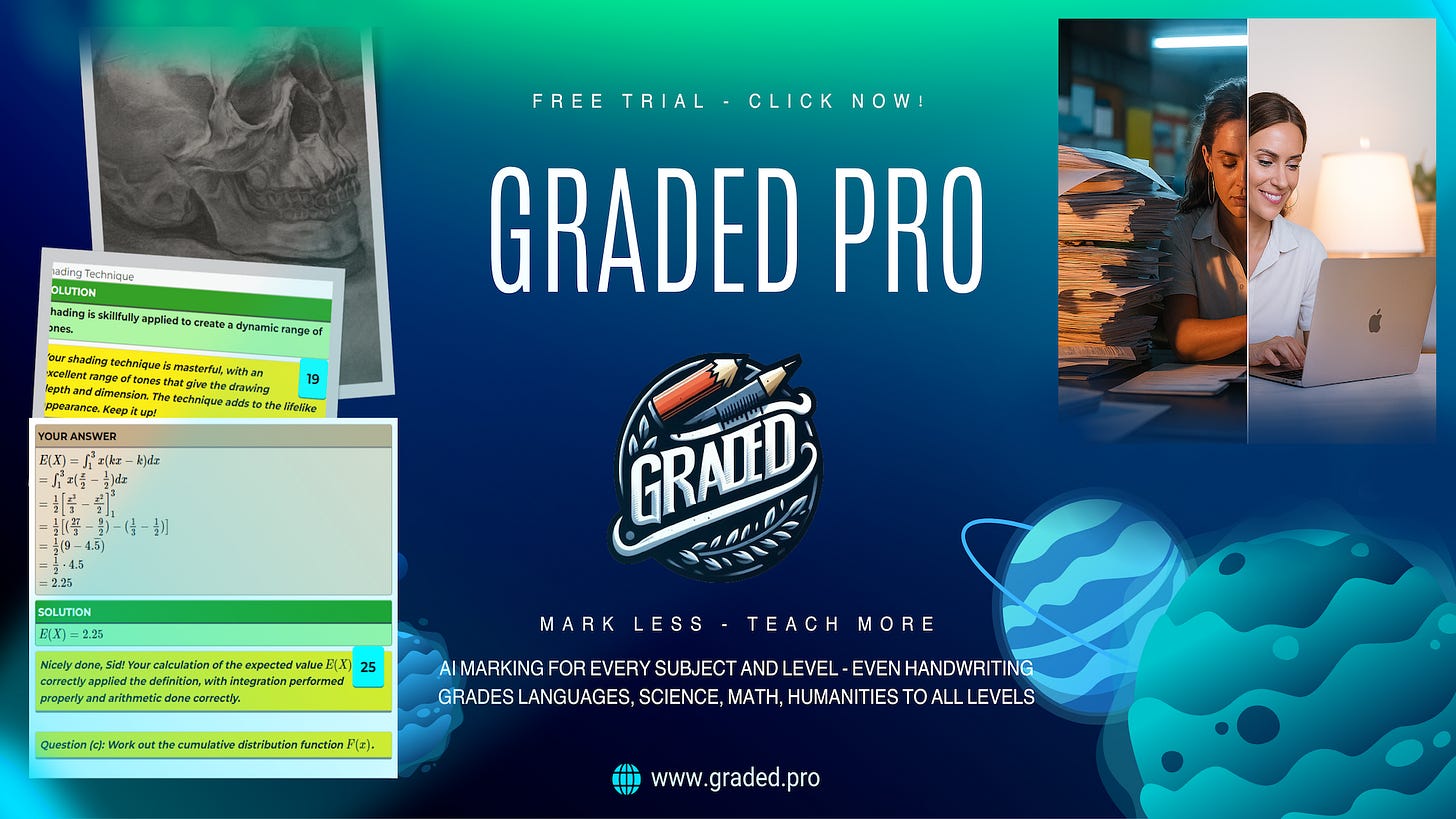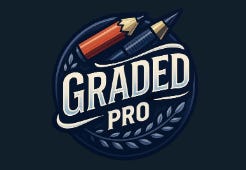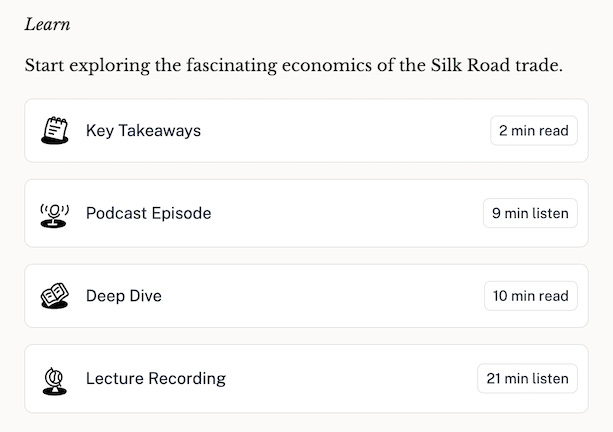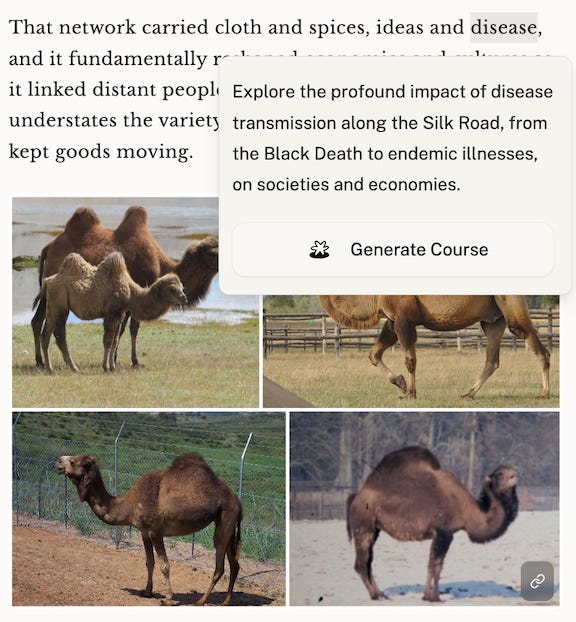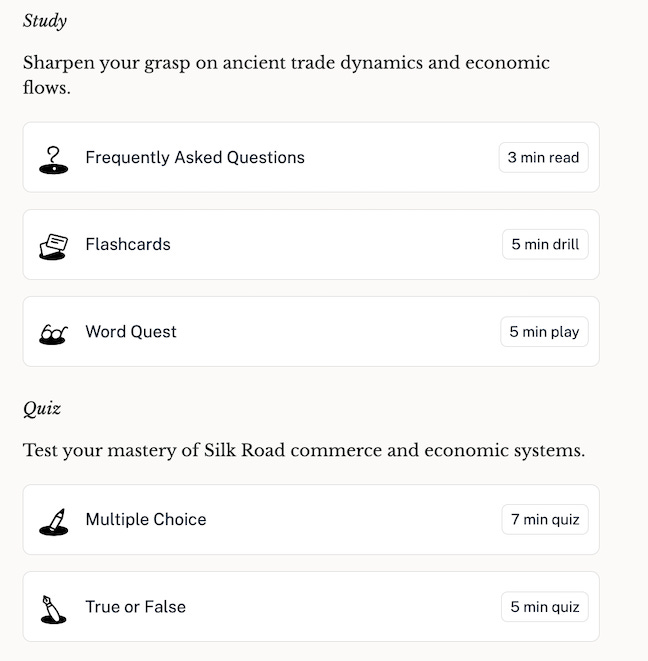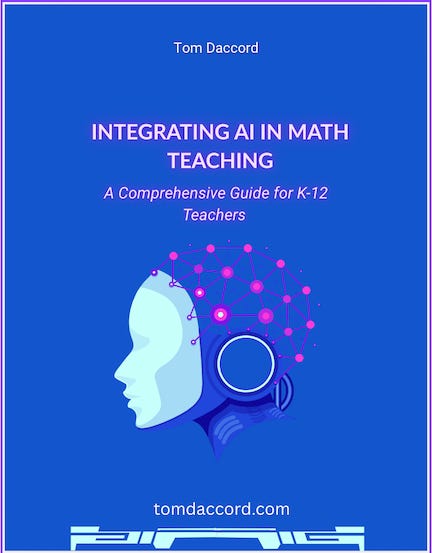Oboe: Fresh, Bite-Size AI Pathways to Student Learning
I come across many AI-powered course creator tools, and I largely ignore them. Most teachers work within standardized sequences, with set texts, familiar exercises, and assessment practices. They’re not looking to reinvent their courses. Yet, teachers are always on the hunt for new, diverse pathways that help students finally “get” curriculum topics.
This is where Obeo comes in. It’s a new AI tool that generates bite-size, multimodal micro-courses you can share by link.
Oboe generates a short, structured learning experience from a simple prompt. (You can upload accompanying documents.) This translates into great flexibility, especially for specialized topics. Users then read, listen (in two audio modes: lecture-style or podcast-style), or interact (through games/tests) with the course content. Courses are intentionally “lightweight” and fast to create. You share a link, and anyone (e.g., your students) can open it.
Just launched, Oboe permits users to follow any shared course for free, and you can create up to 5 free courses per month. It’s available on the web/mobile now, but native apps are coming. Oboe says it uses a multi-agent system to draft, verify, and even pull real images (not AI-generated) into reading formats and runs auditing agents to check accuracy.
Think of Oboe as a pathway generator. It’s not a tutor per se, or a mastery platform. Its best use is to “unblock” a specific curriculum topic for students with fresh modalities, and then send students back to your regular practice, discussion, or writing tasks.
Learn, Study, Quiz
To illustrate: I’ve always struggled to explain to students the profound economic and cultural impact of the Silk Road, and textbooks are of little help. Oboe can fill this void. It offers a free mini-course entitled Unveiling the Economic Secrets of the Silk Road.
In partnership with Graded Pro
Graded Pro is a robust platform that has evolved from a smart Google Classroom add-on into a full-service AI grading ecosystem now used by over 1,000 schools worldwide.
Graded Pro effortlessly handles essays and extended writing, mathematical proofs, science reports, art portfolios, and even messy pen-and-paper work and sketchbook pages. COPPA, FERPA compliant.
With Graded Pro, teachers can grade work up to 95% faster, freeing hours each week for student coaching and individual support.
Global curriculum frameworks come pre-loaded with U.S. Common Core, AP, IB, UK GCSE, and A-Level. Custom rubrics are just a copy‑and‑paste away.
As with other Oboe courses, it’s organized around three sections: Learn, Study, Quiz. As you can see below, the Learn section includes both text and audio options:
The option to listen (lecture style or conversational podcast) is enticing for students who prefer audio, or when reading is not possible. Many course creation platforms are more text/video/quiz structured and fewer offer a well-integrated audio / “learn on the go” mode.
I followed the features in sequence and started with Key Takeaways, which included 10 paragraph-length main ideas. Next, I listened to the Podcast Episode. The banter reminded me of NotebookLM’s Audio Overview: lively, accessible, and informative. I then read the Deep Dive. It came with images, charts, maps, and illustrations. But what surprised me were the highlighted words in the text. I assumed they were definitions or examples. Instead, they are links to additional courses you can generate:
In other words, Deep Dive is a gateway to supplemental Obeo micro-courses directly tied to your topic.
I was less enamored with the Lecture Recording. While I appreciate seeing the full text and hearing it read to me (in a fluent, human-like voice) I would not subject my students to a 21-minute lecture, unless I intended to “flip” the lesson and start the next class with activities based on the recording.
There was nothing particularly notable in the Study and Quiz sections. The tools here are widely available in other course creation platforms, and individually their features pale in comparison to stand-alone programs. (For instance, I would use Quizizz or Quizgecko if quiz creation were a high priority.) But, collectively, Oboe offers a useful and unified range of learning pathways directly tied to a specific curriculum topic. And Obeo is building is a recommendation engine to help users dig deeper on topics.
Of course, you can assign all, or just a few, of the learning pathways generated in the course. That’s up to you. Better yet, though, you can create your own course.
Creating a Course (and hitting roadblocks)
Creating a course is simple. Provide a prompt and upload any accompanying documents. Be as specific as possible, but understand that Oboe only accepts short prompts.
I created a course around ATP, a challenging biology topic for high school students. Here’s the prompt:
Create a HS Bio course, ATP: The Cell’s Energy Currency. Include diagrams, coupling example, and misconceptions section
As noted, Oboe organizes its course materials around Learn, Study, and Quiz. Yet, this time, Deep Dive appeared first in the Learn section. It included plenty of charts, illustrations, and equations to accompany the text, and Oboe respected my instruction to create a “misconceptions” section.
However, the text was written for undergraduate students, certainly not 9th-graders. There were plenty of long and dense sentences containing multiple clauses and also equations beyond the comprehension of most high school students.
I was surprised that Oboe didn’t level the reading material, and it’s certainly a red flag for teachers. I immediately wrote to Obeo via Product Hunt to inquire why my prompt instruction was ignored and requested that they “level up” reading (and audio) materials as users request. (Mine and others’ comments here.)
The audio introduction to the podcast episode was much more accessible, and I was looking forward to a clear and understandable conversation. But, after about 19 seconds, the podcast stopped — and it never resumed. (I waited 10 minutes and reloaded it, too.)
Oboe also doesn’t allow editing, though they say it’s “absolutely on the roadmap.”
I suppose we’ve hit strike three (1. no leveling, 2. podcast malfunctioning, 3. no editing), but I’m high on Oboe’s potential. It offers something interesting and useful: a generative, flexible, multi-modal platform that lets students and teachers quickly create bite-size learning courses on almost any topic, and with engaging formats to boot. That’s not nothing. It’s different from many established platforms, which rely more on pre-designed content and more rigid curricular alignment.
Main Drawbacks
Oboe’s main shortcomings are depth, control, and proof. Its courses are lightweight and generative, so rigor and standards alignment can be uneven. (Yet, you can upload standards-aligned materials). In addition, there’s no robust diagnostic to surface students’ prior knowledge, nor built-in spaced review/mastery checks to ensure they retain the content.
Furthermore, teacher-facing controls (dashboards, assignments, roster analytics) are virtually non-existent, making classroom integration harder. And its generative content can be missing nuance or contain inaccuracies. Finally, it’s only available in English, though the creators have pledged to add more languages.
These drawbacks will discourage some, but keep in mind that Oboe is not designed to be a personal tutor, nor is it a mastery course creator. If used as a supplemental learning tool, as I’ve outlined, it has plenty of useful benefits.
Conclusion
For a teacher or student, Oboe could be very helpful as a supplementary tool for review, enrichment, for student choice, and for exploring tangential topics. Teachers and students can cook up targeted mini-lessons fast, explore niche topics, and learn through multimodal formats (including audio/podcast), all with a low-cost entry point. In short, Oboe is great for quick, shareable, supplemental pathways, but not suitable as a stand-alone, standards-driven system.
My new, free 90-page guidebook is now available for download at tomdaccord.com .
Do you have any suggestions to improve this newsletter? Please message me or leave a comment below!
Find my book AI Tools & Uses: A Practical Guide for Teachers on Amazon
.


